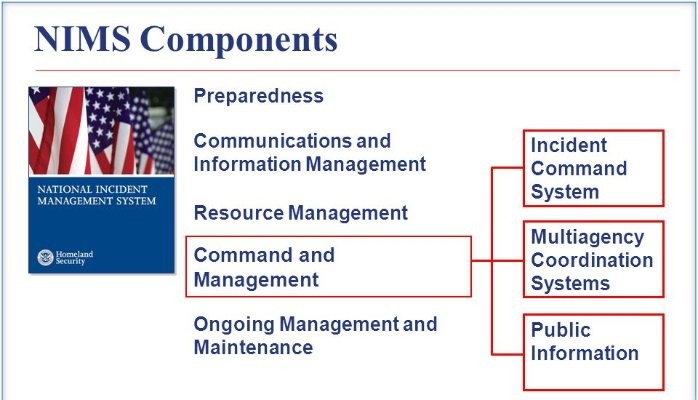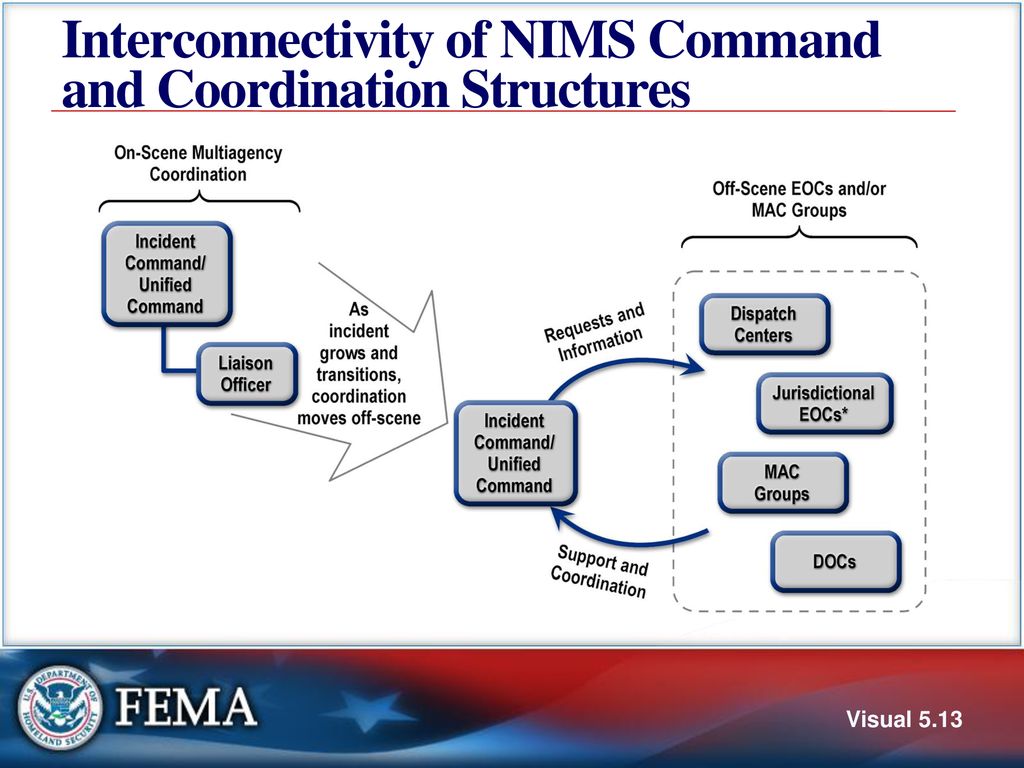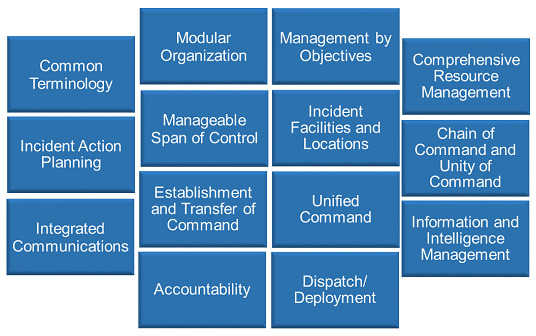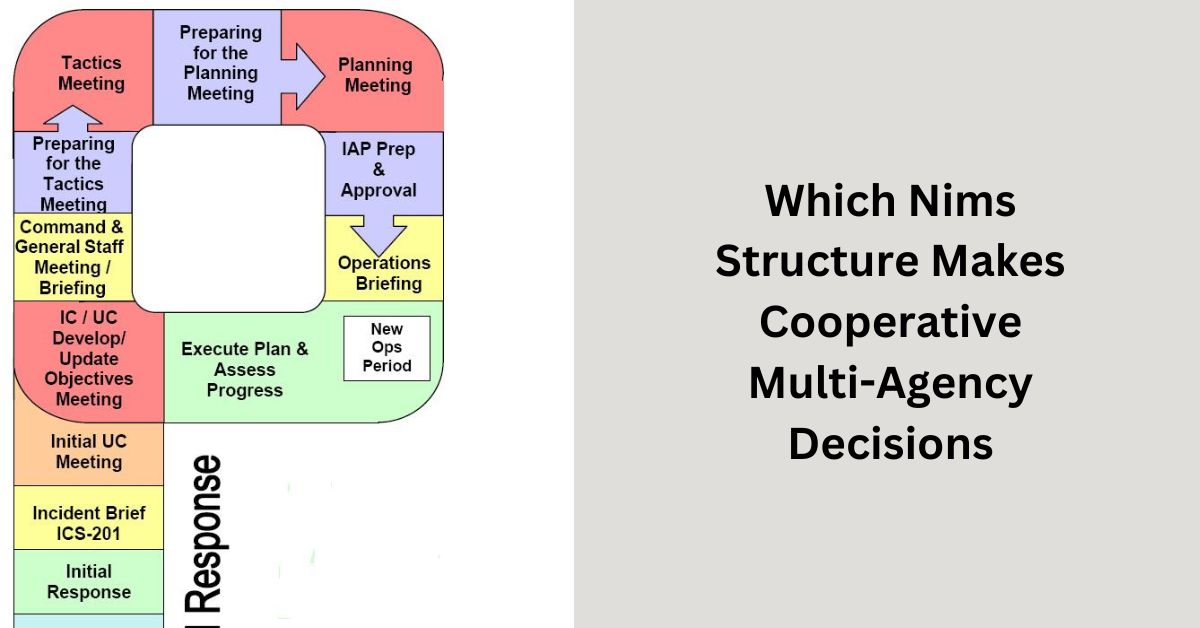Which Nims Structure Makes Cooperative Multi? – Agency Decisions
From my experience, it’s not just a system; it’s the essence of turning chaos into a synchronized and efficient response, making a real difference when every second counts. To answer the question of Which Nims Structure Makes Cooperative Multi-Agency Decisions,
NIMS, specifically the Multiagency Coordination Groups (MAC Groups), takes the lead in making cooperative multi-agency decisions during emergency responses.
This article explores the transformative impact of NIMS and the pivotal role MAC Groups play in making cooperative multi-agency decisions.
Table of Contents:
What Is NIMS? – Let Us Explore!
NIMS, or National Incident Management System, is a standardized framework ensuring effective emergency coordination.
Its purpose is to enhance collaboration among various organizations and agencies, both government and private, in managing incidents.

- It provides a standardized framework, ensuring all agencies use a common language and approach.
- NIMS promotes seamless collaboration between various organizations involved in emergency response.
- Establishing clear protocols and roles aims to improve communication, resource allocation, and overall decision-making.
The ultimate goal is to enhance the nation’s ability to manage incidents efficiently, regardless of scale or complexity, fostering a unified and well-coordinated response to protect lives and property.
How Does NIMS Structure Facilitate Cooperative Decision Making? – Dive Deeper!
1. Unified Command Hierarchy:
NIMS establishes a unified command structure, ensuring clear lines of authority and accountability. This hierarchy minimizes conflicts, fostering collaborative decision-making during emergencies.
2. Preparedness Emphasis:
Emphasizing preparedness, Which Nims Structure Makes Cooperative Multi-Agency Decisions focuses on training and exercises.
This fosters familiarity among agencies, enhancing trust and understanding of each other’s decision-making processes.
3. Communication Systems:
Nims Structure Makes Cooperative Multi-Agency Decisions promotes interoperable communication systems, allowing diverse agencies to exchange information seamlessly.
This ensures decision-makers access critical data promptly, facilitating quick assessments and consensus-building.
4. Resource Allocation Coordination:

The structure facilitates resource management, encouraging agencies to coordinate and share resources efficiently. Collaborative decision-making ensures resources are allocated where most needed.
5. Well-Defined Responsibilities:
NIMS defines roles for effective decision-making, designating Incident Commanders, Unified Commands, and Specialists. This ensures a well-rounded perspective, leading to timely and informed decisions.
Who Is Involved In Making Decisions Within Nims Structure? – Meet The Key Players!
| Role | Responsibilities |
| Incident Commander (IC) | Takes overall incident management, determines priorities, coordinates resources, and shapes strategic objectives. |
| Unified Command | In complex scenarios, a Unified Command comprises senior officials from diverse organizations. It collaboratively decides on crucial aspects through a joint decision-making process. |
| Emergency Operations Center (EOC) Staff | Represents various agencies, offering subject matter expertise, analyzing information, and presenting recommendations to the Incident Commander or Unified Command. |
| Agency Administrators | Individual agency administrators/directors contribute within their jurisdictions, providing input, sharing resources, and aligning objectives with other agencies. |
| Supporting Specialists | Specialists, including subject matter experts and technical personnel, actively contribute within their expertise domains, ensuring a comprehensive perspective in the decision-making process. |
What Is A Multiagency Coordination(Mac) Group? – Dive InTo Information!
A Multiagency Coordination (MAC) group collaborates within the National Incident Management System (NIMS).
It brings together representatives from various agencies to collectively make decisions during emergencies.
This group ensures seamless coordination, effective resource allocation, and strategic planning. By fostering communication and collaboration, MAC groups enhance incident response, promoting a unified approach for diverse agencies to work cohesively.
Read Also: Frndly Tv – Find Out Everything You Need To Know!
Composition of Multiagency Coordination Groups:
- Federal Agencies: Representatives from federal entities contribute their expertise and resources.
- State and Local Governments: Inclusion of state and local-level officials ensures regional perspectives.
- Tribal Governments: Collaboration extends to tribal entities, recognizing their role in incident management.
- Non-Profit Organizations: Universities, faith-based groups, and non-profits participate, adding diverse capabilities.
- Business Associations: Involvement of industry groups facilitates private sector collaboration.
- Labor Unions: Integration of labor unions ensures comprehensive representation.
- Healthcare Entities: Quality improvement entities like hospitals actively contribute to decision-making.
- Industry Associations: Manufacturers and distributors participate, enhancing coordination in incident response.
Role Of Mac Groups In Making Cooperative Multi-Agency Decisions – Explore Their Contributions!

1. Resource Allocation:
MAC Groups excel in coordinating and distributing resources efficiently among various agencies. This collaborative approach ensures optimal utilization during emergency responses.
2. Strategic Coordination:
Guiding policies and offering support, MAC Groups enhance strategic alignment among diverse agencies involved in incident response. Their role is critical in maintaining a unified approach.
3. Information Dissemination:
MAC Groups prioritize real-time information sharing, fostering a shared situational awareness among participating agencies. This facilitates swift and informed decision-making during emergencies.
4. Identifying Future Needs:
Anticipating and planning for future requirements is a crucial function of MAC Groups. Their proactive approach supports agencies in making decisions that address upcoming challenges effectively.
What Are Communication Strategies For Mac Groups – Click Here To Explore!
Effective communication is the cornerstone of Multiagency Coordination (MAC) Groups, ensuring seamless collaboration during emergency response. Key strategies include:
- Interoperable Systems: MAC Groups prioritize establishing interoperable communication systems, enabling different agencies to exchange information effortlessly.
- Transparent Chain of Command: A well-defined chain of command is crucial, providing structure to communication flows and minimizing confusion during high-stakes situations.
- Diverse Communication Methods: MAC Groups utilize diverse communication methods such as email, phone, text messaging, radio/telephone conferencing, and video conferencing, catering to various preferences and situations.
- Standard Operating Procedures (SOPs): Developing SOPs for communication ensures consistency and clarity, outlining roles and responsibilities for all members.
- Real-time Feedback: Enabling real-time feedback mechanisms enhances adaptability, allowing MAC Groups to adjust decisions promptly based on evolving circumstances.
Successful Multi-Agency Coordination Through Mac Groups – Be Inspired!
MAC Groups have facilitated numerous successful initiatives in emergency management, including:
1. Hurricane Katrina Response:
MAC Group was crucial in coordinating multi-agency efforts during the Hurricane Katrina response, ensuring efficient resource allocation and unified decision-making.
2. Interagency Wildfire Management:
MAC Groups have enabled effective collaboration among federal, state, and local agencies in wildfire management, enhancing response capabilities and minimizing damage.
3. Counterterrorism Efforts:

MAC Groups have bolstered interagency cooperation in counterterrorism, facilitating intelligence sharing and coordinated preventive measures enhancing national security.
Read Also: Personalized Necklaces: A Timeless Expression of Individuality
FAQs:
1. How does NIMS enhance communication during emergencies?
NIMS promotes interoperable communication systems, ensuring diverse agencies exchange information seamlessly and facilitating quick assessments and consensus-building.
2. What is the significance of a unified command structure in NIMS?
NIMS establishes a unified command hierarchy to ensure clear lines of authority and accountability, minimizing conflicts and fostering collaborative decision-making during emergencies.
3. What is a MAC group’s role in NI, MS, and Which Nims Structure Makes Cooperative Multi-Agency Decisions?
MAC groups enhance collaboration by coordinating resources, guiding policies, and ensuring effective communication among diverse agencies.
4. How do MAC groups contribute to resource allocation and coordination?
MAC groups enhance resource allocation by coordinating agencies, strategically deploying personnel, and ensuring efficient distribution of essential supplies during emergencies.
Conclusion:
Multiagency Coordination Groups within NIMS make cooperative multi-agency decisions during emergencies. This structure ensures seamless coordination, resource allocation, and strategic planning, fostering collaboration among diverse agencies.
Read Also:




